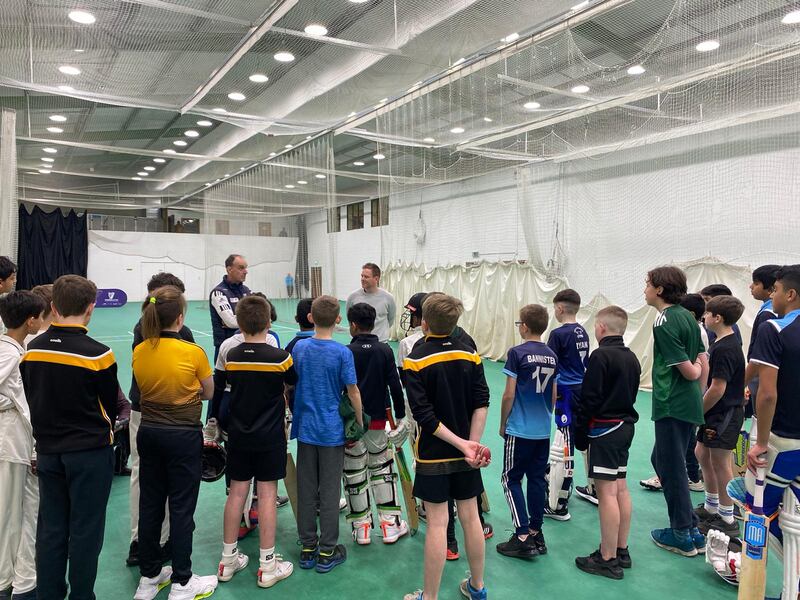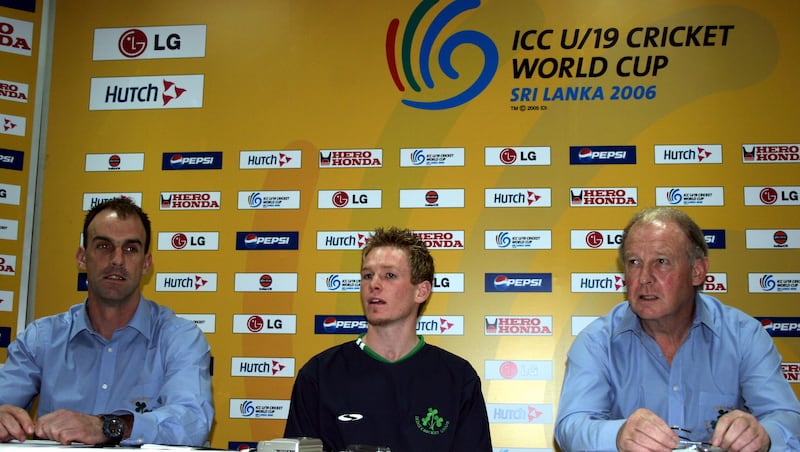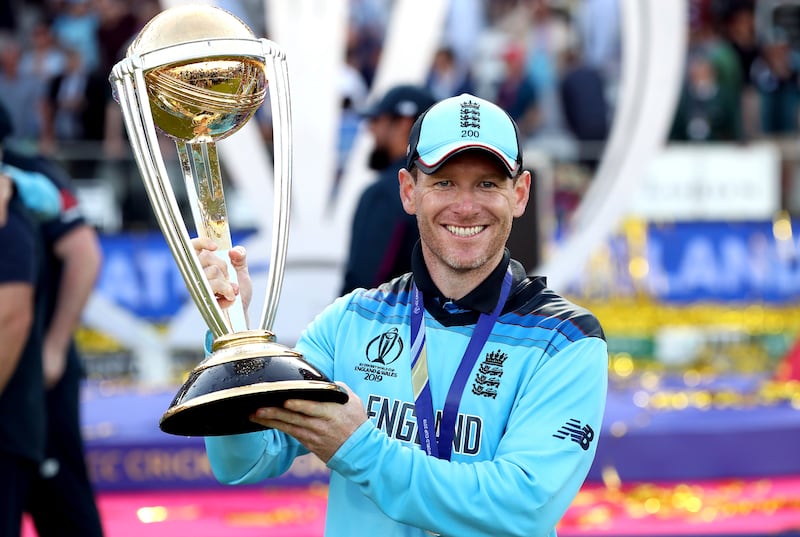Roughly a week after his retirement from all forms of cricket last February, Eoin Morgan was pictured taking part in a grassroots coaching session. England’s Dublin-born, World Cup-winning captain was not working with children at a UK-based academy. He was at North County Cricket Club, inside the only club-owned indoor winter facility in Dublin.
When Morgan released his retirement statement, some pointed out that his 23 One Day Internationals for Ireland didn’t get a mention. Yet shortly thereafter, he was in his hometown, engaged in the game on this island.

The retirement statement was rushed and the timing of the trip in the aftermath was coincidental, according to Morgan. Nonetheless the positive reaction in the Irish cricket community to being seen at one of his old clubs did hit home.
“It was completely unintentional,” says Morgan of the timeline. “We don’t know where it came about but it definitely was mentioned and it made its way back to me which was cool.”
READ MORE
Whenever Ireland play England, as they do in a Test match starting on Thursday, Morgan’s shadow always looms large to a certain extent. This is the second time the sides have squared off since Morgan hung up his spikes, the first coming last October when Ireland pulled off a rain-affected upset at the MCG during the T20 World Cup.
Yet in many ways, this encounter signifies much about how Ireland has finally moved on from what Morgan’s departure exposed. For the first time, with 23-year-old Harry Tector still in the midst of his early career resurgence, Ireland have a middle-order batter who has more world ranking points than Morgan ever achieved in his England career.

Morgan, who will be on commentary duty for Sky this week, is more than happy to praise the man who has come the closest to filling the hole of what he could have been for Ireland, 14 years after his England switch. The Rush native left because there was no pathway for him to reach the top of the game in a green shirt. With Ireland now back playing at the game’s most famous venue, that is no longer the case.
“In prep for this week I’ve listened to a few of his [Tector’s] interviews about his progress and recent success,” says Morgan. “He’s credited it to opportunity and playing more and learning as much as he can. He’s also tied it in with hard work. The combination of hard work and opportunity to play more and more are extremely positive.
“He’s probably doing his talent a little bit of a disservice in the fact that he’s an unbelievably talented young batter still learning his skill. It bodes well for the future of Irish cricket, it certainly gives a bit more stability than they’ve had in the last two years after William Porterfield, Gary Wilson, Niall and Kevin O’Brien retired, guys who’ve been around for 15 years, it’s great to see.”
The wider point about pathways and Irish cricket being able to sustain world class talent was why Morgan, who still lives in the UK, was back in Dublin for that training session in the first place. He was there alongside Brían O’Rourke, Cricket Leinster’s development officer, a man who played an instrumental role in Morgan’s development when he was playing at youth level for Ireland.

This summer, a documentary will be aired on RTÉ. Morgan, who was in Dublin filming for it, is the subject. But at the same time, he is not. He has no interest in doing a biographic film. Instead, he wants to use his story as a case study for a point connected to Tector, about how Irish cricket – for all its ongoing problems – has grown beyond losing its best players to England.
Yet it’s not just the high performance angle being dealt with, but growth in the community as well.
“It’s mainly around where cricket started with Ireland with me being the backdrop of the narrative for the story of cricket – with me from Rush all the way to Lord’s,” explains Morgan.
“The nice piece going back in it is speaking to Bríaner [O’Rourke], people at Rush Cricket Club and not talking directly about me but talking about their story how cricket in the community plays such a big role. And it still does and continues to grow in certain aspects. That was pretty cool.
“We dipped into a session with U11s and U13s, it was just nice to be around, to see the interest levels are way stronger than when I was coming through. We struggled for numbers at certain age groups. That documentary has a bit of background to Irish cricket, the 2007 World Cup in the West Indies, where Irish cricket is at the moment and the challenges that brings, how other youngsters can come through and how the pathway is very different to mine.”
To say Morgan wants to reconnect with an Irish audience would be an overly strong description. As he says himself, he has only experienced small pockets of negativity from Ireland over his decision to play for England: “The overwhelming response to how my career has gone and the path I’ve trodden down has been excellent and overwhelming at times.”

Yet this project, studying Irish cricket clearly still means a lot. “I’ve turned stuff down before where that wouldn’t feel right or mean anything. There was a bit of planning that went into it. Most of my family were involved in being interviewed and referenced as well to give it more depth, so it does mean a great deal.”
On this side of the water, there will always be a thought of what could have been given what Morgan went on to achieve with England. Now, with his career over and Ireland back playing Test cricket with a calibre of player that one day may be comparable to him, Ireland is better equipped to keep the next Eoin Morgan playing in green.














